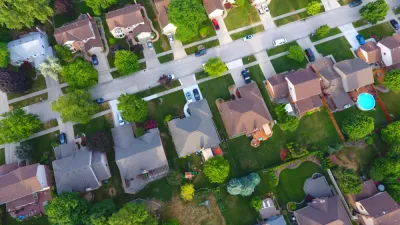Startups aimed at streamlining the house-flipping process are seeking out rental property owners as the popularity of single-family rentals continues to grow.

"Skyrocketing home prices and billions in institutional cash have made the U.S. single-family rental market extremely hot. More than a third of U.S. rentals are now single-family homes; demand is so huge Wall Street investors have created an $85 billion market to build ground-up single-family rental neighborhoods."
Patrick Sisson reports on new software platforms like FlipOS that want to provide a system for streamlining the process of buying, repairing and managing multiple properties for property owners. "The company works with everyone from mom-and-pop investors to institutional buyers, and started collaborating with Phoenix-area flippers last February to try and figure out what he calls the flipper’s 'black magic' — the ability to find houses and do a quick and fast renovation — and then standardize it." But, Sisson writes, "It’s difficult to document just what the spread of this software could do to an already overheated single-family rental market. Rents have jumped 35% year-over-year, hitting $2,160 median rent across the U.S. in February, according to home rental marketplace Dwellsy."
In fast-growing cities like Phoenix, where one-bedroom rents spiked by 117 percent between September 2020 and September 2021, the need for affordable housing is dire. "But the region simply can’t build its way out of its housing crisis without a lot more density, says Alison Cook-Davis, associate director of research at Arizona State University’s Morrison Institute for Public Policy." But the popularity of the single-family rental market could push investors to aggressively promote build-to-rent development of single-family neighborhoods.
FULL STORY: House-Flipping Tech Powers a Boom in Single-Family Rentals

Trump Administration Could Effectively End Housing Voucher Program
Federal officials are eyeing major cuts to the Section 8 program that helps millions of low-income households pay rent.

Planetizen Federal Action Tracker
A weekly monitor of how Trump’s orders and actions are impacting planners and planning in America.

Ken Jennings Launches Transit Web Series
The Jeopardy champ wants you to ride public transit.

Rebuilding Smarter: How LA County Is Guiding Fire-Ravaged Communities Toward Resilience
Los Angeles County is leading a coordinated effort to help fire-impacted communities rebuild with resilience by providing recovery resources, promoting fire-wise design, and aligning reconstruction with broader sustainability and climate goals.

When Borders Blur: Regional Collaboration in Action
As regional challenges outgrow city boundaries, “When Borders Blur” explores how cross-jurisdictional collaboration can drive smarter, more resilient urban planning, sharing real-world lessons from thriving partnerships across North America.

Philadelphia Is Expanding its Network of Roundabouts
Roundabouts are widely shown to decrease traffic speed, reduce congestion, and improve efficiency.
Urban Design for Planners 1: Software Tools
This six-course series explores essential urban design concepts using open source software and equips planners with the tools they need to participate fully in the urban design process.
Planning for Universal Design
Learn the tools for implementing Universal Design in planning regulations.
Ada County Highway District
Clanton & Associates, Inc.
Jessamine County Fiscal Court
Institute for Housing and Urban Development Studies (IHS)
City of Grandview
Harvard GSD Executive Education
Toledo-Lucas County Plan Commissions
Salt Lake City
NYU Wagner Graduate School of Public Service





























